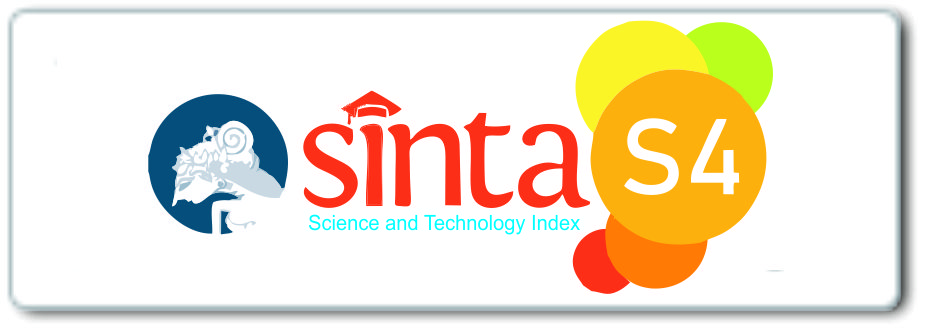Brain Rot and Focus Disorders Survey Impact of Consumption of TikTok and Instagram Reels Content on Teenagers
DOI:
https://doi.org/10.56988/chiprof.v4i3.103Keywords:
Adolescents, Brain fog, Focus disorders, Short-form video, TikTok and Instagram ReelsAbstract
This study investigates the impact of short-form video content consumption on adolescents’ cognitive health, particularly focusing on symptoms of brain fog and attention disorders. Conducted through a quantitative survey involving adolescents aged 16 to 21, the research measured daily usage of TikTok and Instagram Reels and its correlation with self-reported cognitive symptoms. The results indicate a strong positive association between excessive use of these platforms and the prevalence of focus problems and mental fatigue. Interestingly, adolescents with moderate usage reported fewer cognitive complaints, suggesting that limited exposure may offer a form of cognitive stimulation. These findings support existing concerns about digital media overload while also proposing a new perspective through the "Optimal Digital Stimulation" theory. The study highlights the importance of digital balance and offers implications for educational interventions and policy development aimed at promoting healthy media consumption among youth.
Downloads
References
Aharoni Lir, S., & Ayalon, L. (2022). The Wounded Lion – Ageism and Masculinity in the Israeli Film Industry. Frontiers in Psychology, 13(March), 1–12. https://doi.org/10.3389/fpsyg.2022.756472
Al-Ansi, A. M., Hazaimeh, M., Hendi, A., AL-hrinat, J., & Adwan, G. (2023). How do social media influencers change adolescents’ behavior? An evidence from Middle East Countries. Heliyon, 9(5), e15983. https://doi.org/10.1016/j.heliyon.2023.e15983
Al, C. S. de F. b; et. (2020). COVID-19 pandemic impact on children and adolescents’ mental health: Biological, environmental, and social factors. Progress in Neuropsychopharmacology & Biological Psychiatry, January. https://doi.org/https://doi.org/10.1016/j.pnpbp.2020.110171
Bid, D., & A, T. (2009). Introduction to Psychology. Psychology for Physiotherapists, 1–1. https://doi.org/10.5005/jp/books/10686_1
Boudesseul, J., Vieira, L., & Bègue, L. (2020). An Evolutionary Approach to Binge Drinking Impression Formation: A Cross-Cultural Comparison Between France and Peru. Evolutionary Psychology, 18(1), 1–10. https://doi.org/10.1177/1474704919897602
Canning, C., Szusecki, T., Hilton, N. Z., Moghimi, E., Melvin, A., Duquette, M., Wintermute, J., & Adams, N. (2025). Psychological health and safety of criminal justice workers: a scoping review of strategies and supporting research. Health and Justice, 13(1). https://doi.org/10.1186/s40352-025-00320-0
Cerqueira, A., Guedes, F. B., Gaspar, T., Godeau, E., Simões, C., & DE MATOS, M. G. (2024). Psychosocial Factors and Quality of Life of Portuguese Adolescents With Chronic Conditions – Increased Risk for Victims of Bullying. Continuity in Education, 5(1), 128–141. https://doi.org/10.5334/cie.131
Devine, D., Ogletree, A. M., Shah, P., & Katz, B. (2022). Internet addiction, cognitive, and dispositional factors among US adults. Computers in Human Behavior Reports, 6(February), 100180. https://doi.org/10.1016/j.chbr.2022.100180
España, U. D. B. (2025). CAMINOS DE INCLUSIÓN : AYUDA MUTUA Y RECONSTRUCCIÓN DE IDENTIDADES JUVENILES Paths of Inclusion : Mutual Aid and Reconstruction of Youth Identities. 187–205.
Fraser, D. (2017). Nursing Care. In Assisted Ventilation of the Neonate: An Evidence-Based Approach to Newborn Respiratory Care: Sixth Edition (Sixth Edit). Elsevier Inc. https://doi.org/10.1016/B978-0-323-39006-4.00028-4
Ghufron, M. N., Azmi, K. R., & Al-Giffari, H. A. (2024). Peer support and the mental health of Indonesian migrant workers: The mediating role of spiritual well-being and coping strategies. In Psikohumaniora (Vol. 9, Issue 1, pp. 21–36). https://doi.org/10.21580/pjpp.v9i1.20341
Hassan, S. A. M., Elawad Khairalla, M. A., & Fakhrou, A. A. (2023). The crime of cyberbullying and its relationship to addiction to social networking sites: A study at the law college Prince Mohammad Bin Fahd University. Computers in Human Behavior Reports, 12(August), 100346. https://doi.org/10.1016/j.chbr.2023.100346
Hay, C., & Meldrum, R. (2010). Bullying victimization and adolescent self-harm: Testing hypotheses from general strain theory. Journal of Youth and Adolescence, 39(5), 446–459. https://doi.org/10.1007/s10964-009-9502-0
Hoffman, K., Leichtling, G., Shin, S., Seaman, A., Gailey, T., Spencer, H. C., & Korthuis, P. T. (2025). Peer-assisted telemedicine hepatitis-C treatment for people who use drugs in rural communities: a mixed methods study. Addiction Science and Clinical Practice , 20(1), 1–12. https://doi.org/10.1186/s13722-025-00541-6
Hypothetical-roadmap-towards-endometriosis-Prenatal-endocrinedisrupting-chemical-pollutant-exposure-
anogenital-distance-gutgenital-microbiota-and-subclinical-infectionsHuman-Reproduction-Update.pdf. (n.d.).
Jabeen, F., Tandon, A., Azad, N., Islam, A. K. M. N., & Pereira, V. (2023). The dark side of social media platforms: A situation-organism-behaviour-consequence approach. Technological Forecasting and Social Change, 186(PA), 122104. https://doi.org/10.1016/j.techfore.2022.122104
Keller, M. C., & Miller, G. (2006). Resolving the paradox of common, harmful, heritable mental disorders: Which evolutionary genetic models work best? Behavioral and Brain Sciences, 29(4), 385–404. https://doi.org/10.1017/S0140525X06009095
Klingemann, J., Sienkiewicz-Jarosz, H., Molenda, B., & Świtaj, P. (2024). Peer Support Workers in Mental Health Services: A Qualitative Exploration of Emotional Burden, Moral Distress and Strategies to Reduce the Risk of Mental Health Crisis. Community Mental Health Journal, 629–638. https://doi.org/10.1007/s10597-024-01370-8
Kujawska, M., Jourdes, M., Witucki, Ł., Karaźniewicz‐łada, M., Szulc, M., Górska, A., Mikołajczak, P., Teissedre, P. L., & Jodynis‐liebert, J. (2021). Pomegranate juice ameliorates dopamine release and behavioral deficits in a rat model of parkinson’s disease. Brain Sciences, 11(9), 1–9. https://doi.org/10.3390/brainsci11091127
Kusumawaty, I., & Yunike, Y. (2023). Investigating the experiences of family caregivers who shackle people with mental disorders. Frontiers in Psychiatry, 14. https://doi.org/10.3389/fpsyt.2023.1062100
Kusumawaty Ira, Yunike Yunike, E. I. (2019). The complexity of family stigma living with mental illness patients. 8(4).
Mardanian Dehkordi, L., & Javanbakhtian Ghahfarrokhi, R. (2024). Diabetic Patients’ Perception of Diabetic Foot Ulcers: A Qualitative Study. Journal of Qualitative Research in Health Science, 13(3), 138–144. https://doi.org/10.34172/jqr.2024.20
McBain, R. K., Cantor, J. H., Kofner, A., Stein, B. D., & Yu, H. (2020). State Insurance Mandates and the Workforce for Children With Autism. Pediatrics, 146(4). https://doi.org/10.1542/peds.2020-0836
Miller-Young, J., Jamieson, M., & Beck, S. (2023). Diverse experiences and belonging in an online, first-year, team-based engineering design course. Teaching in Higher Education, 2517, 512–528. https://doi.org/10.1080/13562517.2022.2162816
Miranda, S., Trigo, I., Rodrigues, R., & Duarte, M. (2023). Addiction to social networking sites: Motivations, flow, and sense of belonging at the root of addiction. Technological Forecasting and Social Change, 188(December 2022). https://doi.org/10.1016/j.techfore.2022.122280
Muhia, D. (2021). Impact of Peer Influence on Substance Abuse among Students in Public Day Secondary Schools in Thika Sub-County, Kiambu County. Journal of Sociology, Psychology and Religious, 1(1), 1–18. https://edinburgjournals.org/journals/index.php/journal-of-sociology/article/view/39
Nasution, D., Mardianto, Istianti, T., Farida, N., Hasanah, A., Jahja, Y., Nurani, Y., Nilawati, T., بارانی, س. ن. ع. س. و. ح., Evi Puji Astuti, Data, P., Penelitian, T., Pembahasan, D. A. N., Tunas, T. K., Kramat, R., Pamekasan, T., Sunanto, M., Zada, K., El-saha, M. I., … Serdar, D. (2016). Peningkatan Keterampilan Sosial Anak Usia 5-6 Tahun Melalui Metode Proyek. In Jurnal JPP PAUD UNTIRTA (Vol. 1, Issue 2). http://scioteca.caf.com/bitstream/handle/123456789/1091/RED2017-Eng-8ene.pdf?sequence=12&isAllowed=y%0Ahttp://dx.doi.org/10.1016/j.regsciurbeco.2008.06.005%0Ahttps://www.researchgate.net/publication/305320484_SISTEM_PEMBETUNGAN_TERPUSAT_STRATEGI_MELESTARI
Neil, L., White, H., Warren, K., & Pellicano, E. (2019). Anxiety and Interpretation of Ambiguity in Autistic Children, Typical Children and Their Mothers. Journal of Autism and Developmental Disorders, 49(3), 1035–1047. https://doi.org/10.1007/s10803-018-3781-9
Pea, R., Nass, C., Meheula, L., Rance, M., Kumar, A., Bamford, H., Nass, M., Simha, A., Stillerman, B., Yang, S., & Zhou, M. (2012). Media use, face-to-face communication, media multitasking, and social well-being among 8- to 12-year-old girls. Developmental Psychology, 48(2), 327–336. https://doi.org/10.1037/a0027030
Perić, L., Rabar, M., & Orehovački, T. (2025). The Impact of Dating Apps on the Mental Health of the LGBTIQA+ Population. Multimodal Technologies and Interaction, 9(4). https://doi.org/10.3390/mti9040030
Reed, P. (2023). Impact of social media use on executive function. Computers in Human Behavior, 141(December 2022), 107598. https://doi.org/10.1016/j.chb.2022.107598
Santana, C. L. A. de. (2018). mhGAP Intervention guide for mental, neurological and substance use disorders in non-specialized health settings: version 2.0. Jornal Brasileiro de Psiquiatria, 67(3), 208–209. https://doi.org/10.1590/0047-2085000000206
Saylor. (2012). This text was adapted by The Saylor Foundation under a Creative without attribution as requested by the work ’ s original creator or licensee . The Saylor Foundation, 1–542. http://www.saylor.org/books
Smith, T., & Pearce-Dunbar, V. (2023). An exploratory study into the interplay of coolness and maladaptive social media use: Identifying profiles of addiction-like symptoms among Jamaican users. Telematics and Informatics Reports, 11(August), 100091. https://doi.org/10.1016/j.teler.2023.100091
Taylor, S. E. (2018). Health Psychology (Edisi ke-10).
Xu, D., Liu, Y., Zeng, Y., & Liu, D. (2025). Virtual reality in adolescent mental health management under the new media communication environment. Humanities and Social Sciences Communications, 12(1), 1–13. https://doi.org/10.1057/s41599-025-04528-1
Yang, F., Liu, D., & Fan, G. (2025). Emotional labor and coping strategies of gynecological nurses in recurrent pregnancy loss care: a qualitative phenomenological study. BMC Nursing, 24(1). https://doi.org/10.1186/s12912-025-02884-6
Yingxin, X., Singh, C. K. S., Singh, S. K. J. C., Bailey, R. P., Arivayagan, K., & Bamiro, N. B. (2024). The Digital Classroom: Systematic Review of Use of English as a Foreign Language (EFL) in Teaching in Collaborative Online Settings. International Journal of Learning, Teaching and Educational Research, 23(10), 1–26. https://doi.org/10.26803/ijlter.23.10.1
Yousef, A. M. F., Alshamy, A., Tlili, A., & Metwally, A. H. S. (2025). Demystifying the New Dilemma of Brain Rot in the Digital Era: A Review. Brain Sciences, 15(3). https://doi.org/10.3390/brainsci15030283
Yunike, & Kusumawaty, I. (2022). Evaluation of Positive Parenting Training Program in Improving Mental Health of Children. Budapest International Research and Critics Institute-Journal (BIRCI-Journal), 5(2), 10643–10655.
Zhu, J., Ma, Y., Xia, G., Salle, S. M., Huang, H., & Sannusi, S. N. (2023). Self-perception evolution among university student TikTok users: evidence from China. Frontiers in Psychology, 14(February), 1–13. https://doi.org/10.3389/fpsyg.2023.1217014
Downloads
Published
How to Cite
Issue
Section
License
Copyright (c) 2025 Eka Harsanto, Yunike, Ira Kusumawaty

This work is licensed under a Creative Commons Attribution-NonCommercial 4.0 International License.




















